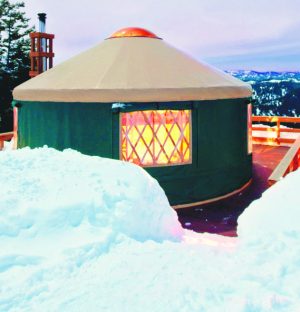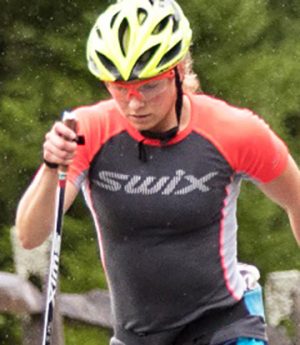September 30, 2014 (Ried im Innkreis, Austria) – Fischer Sports celebrated its 90th anniversary at the Ried Exhibition Centre on Friday, September 26. Besides the owners, the supervisory board and all members of staff, numerous guests of honour gladly accepted the invitation from the Upper Austrian family-owned company.
![Celebrating 90 years of Fischer Sports (l-r) Gregor Schlierenzauer (AUT), Sandra Lahnsteiner (AUT), Nicole Hosp (AUT), Thomas Morgenstern (AUT), Axel Naglich (AUT), Ivica Kostelic (CRO) [P] Fischer Sports Celebrating 90 years of Fischer Nordic [P] Fischer Sports](http://skitrax.com/wp-content/uploads/2014/09/Celebrating-90-years-of-Fischer-Nordic-P-Fischer-Sports.jpg)
When journeyman wainwright Josef Fischer set up his own wagon-making business in a wooden barn in Ried im Innkreis in the year 1924 he never dreamt that 90 years on in the year 2014 his company would rank among the most successful family-owned businesses in Austria, employing some 460 people at the Ried headquarters alone.
Today it is his son and owner KR Josef Fischer who can look back with pride on the family’s lifetime achievements. In the corporate history book of Fischer Sports he says, “In order to understand the present day and judge the future you have to look back on things. And this applies to companies in particular. Tradition and the structures that have grown are the foundation upon which the present and the future are built.”
And he knows what he is talking about, as he himself was at the helm of the successful family-owned company which celebrated its 90th anniversary last weekend in Ried im Innkreis.
Not only active athletes such as Nicole Hosp (AUT), Ivica Kostelic (CRO), Sandra Lahnsteiner (AUT), Axel Naglich (AUT), Thomas Morgenstern (AUT), Gregor Schlierenzauer (AUT) but also former colleagues and Fischer legends including Sven Fischer (GER), Kristian Ghedina (ITA), Andreas Goldberger (AUT), Michael von Grünigen (SUI), Kathi Hölzl (GER), Toni Innauer (AUT), Hans Knauss (AUT), Ken Read (CAN), Bente Skari (NOR), Vegard Ulvang (NOR), Elena Välbe (RUS), Thomas Wassberg (SWE), Harti Weirather (AUT), Alexander Zavialov (RUS) made the evening one to remember.
The numerous milestones in the history of the company were presented in a colourful show. Groundbreaking innovations were featured together with the sport stars who helped to make the brand known throughout the world.
It was a time to eat, drink, dance, be happy and take a trip down memory lane. A History Walk created especially for the occasion brought models and memories from days long forgotten back to life again. The approach taken throughout was clear to see: continuous further development and investment in new technologies. This approach is omnipresent and an integral part of the corporate mission – as it has been from the very beginning.
“Fischer is the last major Austrian ski manufacturer which is still in 100% family ownership. The course was already set successfully for the future, too, a long time ago: Fischer has become firmly established as a supplier not only in the ski but also in the boot sector. The focus on our core segments – skiing hardware – and the absolute commitment to technology leadership are fixed in the genes of our company,” says Franz Föttinger, CEO Fischer Sports.
History in the Making – From Wagon Maker to the Most Successful Ski Brand
Founded back in 1924 by Josef Fischer senior in a wooden barn in Ried im Innkreis, the company Fischer Sports is the only well-known ski brand which remains in family ownership. In the beginning the company produced rack wagons, sledges and occasionally skis. Some 11 years later there were already signs of going into series production.
After the death of Josef Fischer senior in 1959 a new era began: his son Josef ‘Pepi’ Fischer and sister Selma Sturmberger become the company’s general managers. With victory for Egon Zimmermann at the 1964 Olympic Games in Innsbruck Fischer finally established itself in racing. The first Fischer cross country line was launched at the ISPO show in Munich in 1971. From then on, Fischer made its way step-by-step to becoming the global market leader in the Nordic segment. Boots were added to the cross-country range in 1994 and Alpine became a single-source supplier in 2003 with Soma-Tec ski boots.
Fischer also earns a reputation away from the tracks and pistes. The company conquered the tennis market from 1974 on. In the golden years, tennis greats such as Stan Smith, Wimbledon winner (1991) Michael Stich and Yevgeny Kafelnikov at the top of the world rankings relied on innovations and equipment from Upper Austria. Fischer sold its tennis technologies to Pacific in 2009 due to economic circumstances. Parallel to this from 1988 the production of hockey sticks was running at full speed. To begin with as an OEM producer and then under the Fischer brand, the relatively young division experienced rapid development which made it one of the world’s largest manufacturers of hockey sticks.
Driving forward developments, being open to new things, letting the pioneering spirit of the past live on, these remain to this day the key values at Fischer. As a result, a multitude of innovations can be found throughout the history of the company. CROWN FINISH, AIR CORE, NORDIC CRUISING, SOMA-TEC and VACUUM in skis and boots are just some of the technologies which have taken the ski industry by storm over the years. These have been joined most recently by VACUUM FIT (2011) and SPEEDMAX (2013).
Thanks to the revolutionary thermoforming technology VACUUM FIT for Alpine ski boots, it is now possible for the first time to adapt the shell of the ski boot completely to the anatomy of any foot. In the Nordic sector, SPEEDMAX sees the birth of a whole new generation of racing skis which for the first time avoids the combination of heat and pressure in the application of the base, thus giving the ski a new dimension in speed. 2014 is the year of VARIO CROWN for Nordic – the new climbing system which guarantees perfect climbing and balanced gliding through optimum tuning of the climbing and gliding features of the system in all snow conditions. For Alpine it is the year of Tour, with Fischer launching the first fully adaptable ski touring boot to round off its tour portfolio at the highest level.
It is also the drive for innovation which enabled the companies FACC1 and FCT² to emerge from Fischer. The search for lightweight components unites ski developers and those working in the aviation and automotive industries. Optimum use is made of synergies which are integrated in the respective lines until the economic situation of these industries in 2008 (FACC) and 2009 (FCT) force the family-owned company to focus on its core competencies again: skiing and its many facets.
Around 460 people today work at the headquarters in Ried. Fischer Sports’ range spans the full range of hard goods for both the Alpine and Nordic sectors. Besides this the company also sells jumping skis, hockey sticks and accessories throughout the world. Racing is a fixed part of the corporate strategy as a platform for marketing and development; however this is generally used as a testing ground with the highest quality for all target groups. The history of the company is nothing short of remarkable.
Milestones Company History
1924 – THE FOUNDING OF THE COMPANY
In 1924 Josef Fischer Senior begins making handcarts, sledges and some few skis in a wooden barn. Ninety years later Fischer is a global group of companies. To this very day Fischer has retained its identity as a family business, successful on an international scale through a symbiosis of tradition, pioneering and high-tech.
1959 – A NEW GENERATION
Josef Fischer Senior dies of a heart attack. He leaves behind him one of the biggest ski companies in the world. Josef Fischer Junior and his sister, Selma Sturmberger, now run the company.
1976 – THE NATION’S HERO
Franz Klammer (AUT) takes the gold medal in the Olympic downhill in Innsbruck (AUT) with Fischer C4 skis. He masters the difficult run down the Patscherkofel in the marvelous time of 1:45.73.
1979 – CROWN GRINDING
With the invention of Crown grinding, Fischer makes a breakthrough in what are known as waxless skis. The days of integrated skin strips as a climbing aid are gone.
1984 – NEW TECHNOLOGIES
Josef Fischer sets new standards in ski making with the introduction of a revolutionary production technology. The VACUUM method creates a homogenous ski body in which ski forces can flow softly into each other. In cross country, it is the COMPOSITE CORE (lightweight core) that makes it possible to build the lightest cross-country ski in the world.
Reinforcing elements developed especially by Fischer that take up only 20% of the space available enable series production for the new lightweight ski. This is the dawn of the lightweight era in cross-country skiing.
1993 – NORDIC RECORDS
Bjørn Dæhlie (NOR) wins the overall cross country World Cup, with Vegard Ulvang finishing third. Fischer wins all the men’s World Cup races in the 92-93 season!
At the Nordic Ski WCH in Falun (SWE), Fischer is the most successful ski brand, winning 13 gold, 6 silver and 9 bronze medals.
At the Alpine Ski WCH in Morioka (JAP) Atle Skaardal (NOR) wins silver in the downhill and Thomas Stangassinger (AUT) takes bronze in the special slalom event.
2008 – MOST SUCCESSFUL SKI BRAND
With three large crystal globes, eight small crystal globes, numerous World Cup victories and podium placings, Fischer is the most successful ski brand in the 07I08 season according to the FIS brand ranking.
2011 – VACUUM FIT
A new milestone in the Alpine boot development gets introduced at ISPO. Vacuum Fit is the highlight of the entire fair and on the way to revolutionizing the boot market.
2013 – SPEEDMAX
At the 2013 ISPO fair Fischer introduces the new generation of Nordic racing skis: Speedmax – the name stands for itself because the winner’s ski from Val di Fiemme offers a new dimension of speed.
For the Alpine boot collection VACUUM COMFORT FIT is in the focus of the communication.
2014 – 108 OLYMPIC MEDALS FOR THE “FISCHER FAMILY”
What a way to celebrate a 90th anniversary: Fischer sets a new medals record at the 2014 Winter Olympic Games in Sochi. Fischer’s performance in Russia is impressive, winning 103 out of the 159 medals possible in the Nordic disciplines. The Alpine athletes are also pleased about five medals. In its 90th year the familyowned company based in Ried im Innkreis confirms its position as the clear number one in ski racing in impressive style.
Innovation Milestones – Nordic
1979 – CROWN GRINDING
With the advent of Crown grinding, the first climbing system to be cut into the base, Fischer makes a breakthrough in what are known as waxless skis. The days of integrated skin strips as a climbing aid are over as a result.
1984 – AIRCORE
The lightweight core makes it possible to build what is at the time the lightest cross country ski in the world. Reinforcing elements developed especially by Fischer that take up only 20% of the space available enable series production for the new lightweight ski. This is the dawn of the lightweight era in cross country skiing.
2002 – NORDIC CRUISING
As the Nordic market leader, Fischer sees itself as having a duty to drive forward the cross country market and sets a trend with Nordic Cruising. The shorter, wider and easy to handle skis for newcomers and fitness enthusiasts are presented to sports retailers with resounding success in 2002. Cross country skiing sheds its conservative image and, thanks to Fischer, becomes a fitness trend.
2006 – CARBONLITE
It is advertised as the “architecture of lightness”. A newly developed carbon fabric – Fischer Carbon Fibre – makes it possible to reduce individual materials in the ski core. Thanks to a fundamental optimisation of the ski core technology and weighing in at less than 1000 grams per pair (187 cm in 2005), the lightest racing ski of all time is ready to race.
2013 – SPEEDMAX
SPEEDMAX is the birth of a whole new generation of race skis. For the first time ever the combination of heat and pressure is avoided in the base application. The winning skis of Val di Fiemme represent a new dimension in speed.
Innovation Milestones – Alpine
1973-2004 – C4
Franz Klammer wins the gold medal in the 1976 Olympic downhill in Innsbruck with Fischer C4 race skis developed since 1973. The ski grips, turns and runs better, tuned in line with the latest findings in the World Cup. The C4 is relaunched in 2004 and causes a sensation among Fischer fans.
1976 – HOLE SKI
The secret of the Hole Ski lies in the fact that skis are subject to several thousand “knocks” on a downhill run, all of which have an impact on the tip of the ski. The lighter the ski tips, the lower the impact of the knocks on the skis and the body, and less time is lost as a result. The Hole Ski stands out through calm skiing behaviour and absolute control.
1984 – VACUUM TECHNOLOGY SKI
Fischer sets new standards with the introduction of this revolutionary production technology. The individual parts of the ski are joined together carefully and gently in this vacuum process in outer-space conditions. The new ski performance is convincing: no cutting, no jolting and no scratching.
2003 – SOMA-TEC
Soma-Tec is Fischer’s first ski boot and all about “listening to your feet”. It is the first ski boot to be adapted and developed according to the anatomy of the human foot. Soma-Tec technology harnesses the power in the boots through the natural V-position of the feet for perfect power transfer, maximum acceleration and less effort required.
2011 – VACUUM FIT
A milestone in ski boot development: thanks to the revolutionary thermoforming technology for Alpine ski boots, it is now possible for the first time to adapt the shell of the ski boot completely to the anatomy of any foot. VACU-PLAST material and a special process achieve a fit which revolutionises the boot market.






![National camp action [P]...](https://skitrax.com/wp-content/uploads/2019/08/Duluth-4-2019-08-08-at-10.46.51-AM-300x246.png)
![Matt Liebsch on the CXC Elite Team [P] CXC...](https://skitrax.com/wp-content/uploads/2019/08/Matt-Liebsch-CXC.2-525x700.4-300x267.jpg)
![Dan LaBlanc [P]...](https://skitrax.com/wp-content/uploads/2019/08/Dan-LaBlanc-img_1855.3.jpg)

![Fischer CEO Franz Föttinger [P] Fischer Sports 90 Years of Fischer [P] Fischer Sports](http://skitrax.com/wp-content/uploads/2014/09/90-Years-of-Fischer-P-Fischer-Sports.jpg)
![Fischer celebration selfie (l-r) Bente Skari (NOR), Sven Fischer (GER), Kathi Hölzl (GER), Michael von Grünigen (SUI), Hans Knauss (AUT), Moderator Stefan Steinacher [P] Fischer Sports Fischer selfie [P] Fischer Sports](http://skitrax.com/wp-content/uploads/2014/09/Fischer-selfie-P-Fischer-Sports.jpg)
![1924 - THE FOUNDING OF THE COMPANY [P] Fischer Sports Fischer 1924 [P] Fischer Sports](http://skitrax.com/wp-content/uploads/2014/09/Fischer-1924-P-Fischer-Sports.jpg)
![1979 - CROWN GRINDING [P] Fischer Sports Fischer 1979 [P] Fischer Sports](http://skitrax.com/wp-content/uploads/2014/09/Fischer-1979-P-Fischer-Sports.jpg)
![1993 Bjørn Dæhlie (NOR) wins the overall cross country World Cup [P] Fischer Sports Fischer 1993 Bjorn Daehle [P] Fischer Sports](http://skitrax.com/wp-content/uploads/2014/09/Fischer-1993-Bjorn-Daehle-P-Fischer-Sports.jpg)
![2011 - VACUUM FIT [P] Fischer Sports Fischer 2011 [P] Fischer Sports](http://skitrax.com/wp-content/uploads/2014/09/Fischer-2011-P-Fischer-Sports.jpg)
![Fischer Factory - present [P] Fischer Sports Fischer Factory - present [P] Fischer Sports](http://skitrax.com/wp-content/uploads/2014/09/Fischer-Factory-present-P-Fischer-Sports.jpg)
October 1st, 2014 at 9:14 am
A couple of names missing here that I think Fischer would have and should have noted—Bill Koch, who in my estimation had the best 20 year old Olympics ever in 1976—silver medal-30km, 6th place finish-15km, fastest 3rd leg in relay and 13th place in the 50 kn and was the 1st ever user of a true no wax ski in the Olympics and international competition. Yes, Bill did that on Fischer skis– not Rossignol like most people think.
Also, how could they not mention Gerhard Thaller–Nordic racer-chaser par excellence during the 70s and 80s—he brought Fishers Nordic name to the forefront.